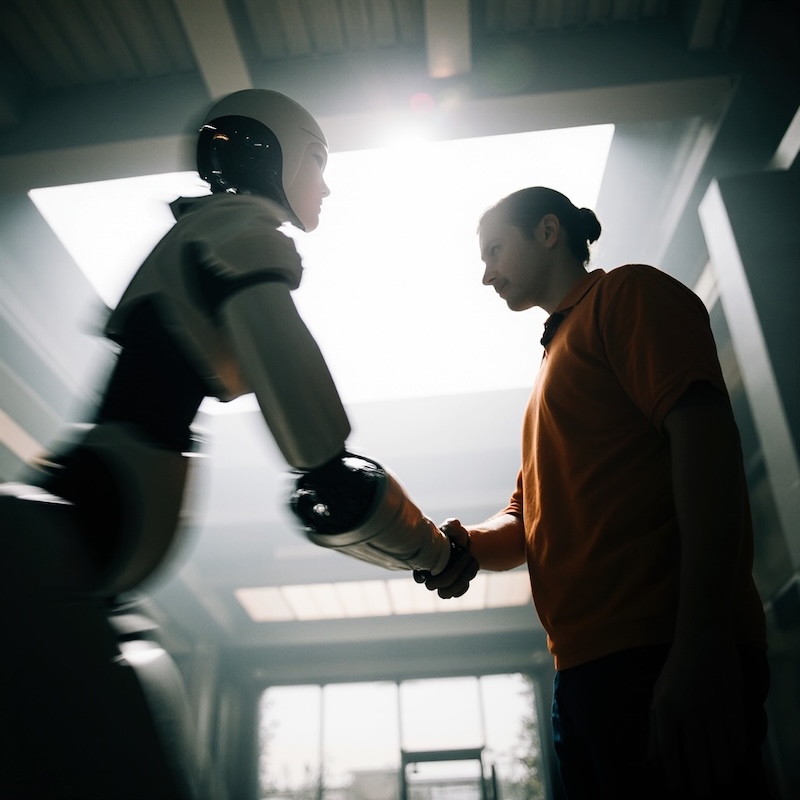
A recent research reviews the current state and future directions of personalized Human-Robot Collaboration (HRC) in manufacturing, emphasizing user-centric adaptation as a cornerstone of Industry 5.0 for inclusive, efficient, and ethically responsible workplaces.
Imagine walking into a factory and seeing a robot pause, scan your face, and slow down—just because it knows you're having a tough day. 🤯 Sound futuristic? It’s not. Thanks to personalized Human-Robot Collaboration (HRC), workplaces are moving beyond the "smart factories" of Industry 4.0 and stepping into the human-centric world of Industry 5.0.
A recent review paper from Tampere University dives deep into this exciting shift, asking a bold question:
“What if robots didn’t just work with humans, but adapted to the unique needs of each human?”
Let's unpack what that means in a fun, digestible way—with emojis and all! 🎉
So instead of just making factories smarter, we’re now making them kinder, more adaptable, and built for real people with real differences.
No two workers are the same. Some may be:
Personalized HRC means designing robot systems that know and react to each worker’s specific situation. We're talking user-centric instead of just human-centric. 🎯
Let’s break down how personalization actually works in HRC, based on the review's findings:
These are static or semi-static traits.
Identity Factors: Language, culture, gender, age.
🤔 Example: Some cultures prefer more personal space from robots.
🗣️ Robots might need to switch between languages or dialects.
Physical Factors: Height, dexterity, mobility, sensory abilities.
🦽 Adaptive interfaces help people with motor or sensory impairments.
🧤 Robots adjust their working height or tools to suit the operator.
Mental Factors: Neurodivergence, learning styles, cognitive abilities.
🧩 Tailored instructions help workers with ASD or dyslexia stay engaged.
🧠 Systems may offer more guidance or simplify tasks for new users.
These are dynamic—your current mood, energy level, or stress.
Here’s where it gets sci-fi cool. 🚀
A Human Digital Twin (HDT) is a digital model of you—your skills, preferences, stress patterns, etc. Robots use this data to predict your needs. Imagine:
📊 Knowing when you’re most productive
🧘 Suggesting stress-reducing tasks
🛠️ Adapting workflows to your abilities
But… this raises serious questions about privacy, ethics, and fairness. More on that later. ⚖️
Robots aren’t just smarter—they’re more thoughtful.
Here’s how personalization happens in action:
The system learns and adapts. It’s a smart teammate, not just a machine. 🧑🤝🧑
This kind of personalization sounds amazing… but also a bit creepy. 😬
The EU is already updating regulations like:
For example, the EU AI Act bans emotion recognition in workplaces—unless it’s for health/safety reasons. ⚖️
The paper outlines some exciting (and necessary) future steps:
Robotics + psychology + biomechanics = real progress
Don’t build systems for “the disabled”—build flexible systems for everyone
✅ Personalized HRC is transforming how humans and robots work together
✅ Industry 5.0 means focusing on the individual, not just “people”
✅ Real-time adaptation enhances safety, efficiency, and inclusivity
✅ Ethical and privacy concerns must be addressed with regulation
✅ The future is not just about smarter robots—it’s about better work for everybody
We're standing at the threshold of a new industrial revolution—one where your needs, skills, and emotions shape the machines around you. 🤝
Industry 5.0 isn’t just about high-tech robots—it’s about human flourishing, inclusivity, and designing workplaces that care.
So the next time you hear the word “cobot,” remember—it might just be your new best work buddy. 🤖❤️
Let’s keep building the future—together. 🏗️🔋💼
🤖 Human-Robot Collaboration (HRC) - When humans and robots work together on tasks in the same workspace—like teammates, not just tools. It blends human creativity with robot precision!
🏭 Industry 4.0 - The fourth industrial revolution, focused on smart factories using automation, AI, and the Internet of Things (IoT). It made factories faster and more connected—but not very human-friendly. - More about this concept in the article "Building Trust in Smart Factories 🧠 🏭 How Engineers Are Embedding Ethics into AI".
💡 Industry 5.0 - The next step after Industry 4.0, where technology is designed to work with humans—not just around them. It puts people’s well-being, personalization, and inclusion at the center of innovation. - More about this concept in the article "Agentic AI in Industry 5.0 🤖 How Talking to Your Factory Is Becoming the New Normal".
👤 User-Centric Design - Designing systems that adapt to individual users' needs, not just the “average” human. Everyone works differently—tech should adjust to you!
🧍♂️ Human Factors - The physical, mental, and emotional traits that affect how people interact with machines. - Understanding these helps robots work safely and comfortably with real humans.
🧠 Human Digital Twin (HDT) - A virtual model of a real person that reflects their skills, preferences, and behaviors in real-time. It lets robots learn and predict how best to help each individual.
📊 Task Allocation - Deciding who (human or robot) does what task, and when. Smart planning = smoother teamwork and better results.
🔄 Adaptive Systems - Technologies that automatically change how they behave based on your current state—like energy level or mood. They respond to you in real time for maximum comfort and efficiency.
🔐 GDPR / AI Act (EU Regulations) - Laws that protect your personal data and guide how AI is allowed to work in Europe. Your emotions, stress levels, and biometric data are sensitive—rules make sure they're not misused. - More about this concept in the article "TrustShare 🛡️ How Blockchain, Encryption, and Smart Contracts Join Forces to Protect Us All".
🤝 Cobot (Collaborative Robot) - A robot specifically designed to safely work alongside humans, often sharing the same space and tasks. While conventional industrial robots are typically confined to guarded enclosures, cobots are your friendly work buddies—smart, flexible, and people-aware!
Source: James Fant-Male, Roel Pieters. A Review of Personalisation in Human-Robot Collaboration and Future Perspectives Towards Industry 5.0. https://doi.org/10.48550/arXiv.2506.20447
From: Tampere University.